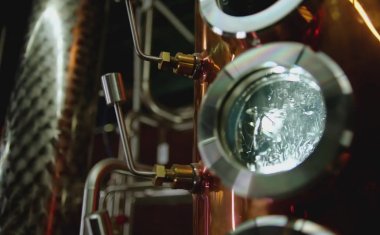Exxon Starts World’s first Crude-Cracking Petrochemical Unit
ExxonMobil officially launched the world's first chemical unit that processes crude oil in Singapore, aiming to lower costs to better compete with rivals in a market saddled with excess capacity.
Chemical companies typically process refined oil products such as naphtha - created by separating crude oil into lighter groups - at facilities called crackers to create petrochemicals like ethylene and propylene. These are further processed into products such as plastics, soaps or synthetic fibers.
But Exxon's new cracker in Singapore allows the company to bypass the refining process by processing crude directly into petrochemicals.
"This is the right place to do crude cracking because it gives us an advantage over the predominant feedstock in the region," ExxonMobil Chemical's president Stephen Pryor told Reuters.
"The cracker we've built is by far the most feed flexible cracker we've ever built. It can crack anything from light gases to heavy liquids, including crude oil."
The new technology helps reduce raw material costs, energy consumption and carbon emissions, Pryor said, while the cracker also produces fuel components.
He declined to detail the extent of Exxon's savings or specify which crude grades are processed at the cracker. The cost of Brent crude is more than $160 a tonne lower than Asia's naphtha <NAF-1H-TYO>, Reuters data showed.
Crackers in Asia typically use naphtha as a feedstock, while those in the Middle East enjoy a cost advantage as they process cheaper ethane and propane gases into petrochemicals.
The multi-billion dollar complex on Singapore's Jurong Island includes the 1 million tonne per year (tpy) steam cracker as well as production of at least 1.4 million tpy of polymers and elastomers. The cracker was brought online in the middle of last year, but Exxon has not previously confirmed the use of crude as a feedstock.
The project had been delayed for two years due to its complexity and a weak economic outlook which has pared the use of petrochemicals in automobile parts, electrical applicances and consumables, despite excess capacity.
Chemical Demand Rising
An improved economic outlook in the United States and better demand in China is expected to raise global chemical demand growth in coming years, according to the American Chemistry Council.
The Council sees headline global petrochemicals growth of 4.1% in 2014 and 4.5% in 2015, up from 2.1% last year, said Thomas Kevin Swift, its chief economist and managing director.
"After a couple of very slow years, we saw good demand growth in China last year," said Pryor. "With China's export sector picking up, we would expect that to continue."
Global chemical demand for primary petrochemicals was expected to grow by about 50% over the next decade, with China accounting for half of the growth, he added.
To meet this demand, Exxon also planned to raise ethylene capacity at its joint venture with Saudi Aramco and Sinopec in southern China Fujian by 200,000 tonnes per year in 2015. At the Singapore plant, Exxon could also produce specialty petrochemicals such as butyl rubber for tyres and premium resins for adhesives, Pryor said.
Yet, supply from the United States could jump as petrochemical producers, including Exxon, launch projects to take advantage of cheap ethane gas from the shale resources boom. Exxon plans to build a 1.5 million tpy ethylene complex at Baytown, Texas by 2016.
"Demand will grow but it will be a competitive marketplace from a standpoint of capacity and that means that marginal liquid crackers are going to be under a lot of pressure," Pryor said.
"You already see that in Europe, you see that in Japan and you're going to see it throughout the region."
French oil major Total and Ineos have said they will shut loss-making petrochemical plants in France and Scotland as Europe readies for a competitive assault from U.S. rivals armed with cheap feedstock.
















